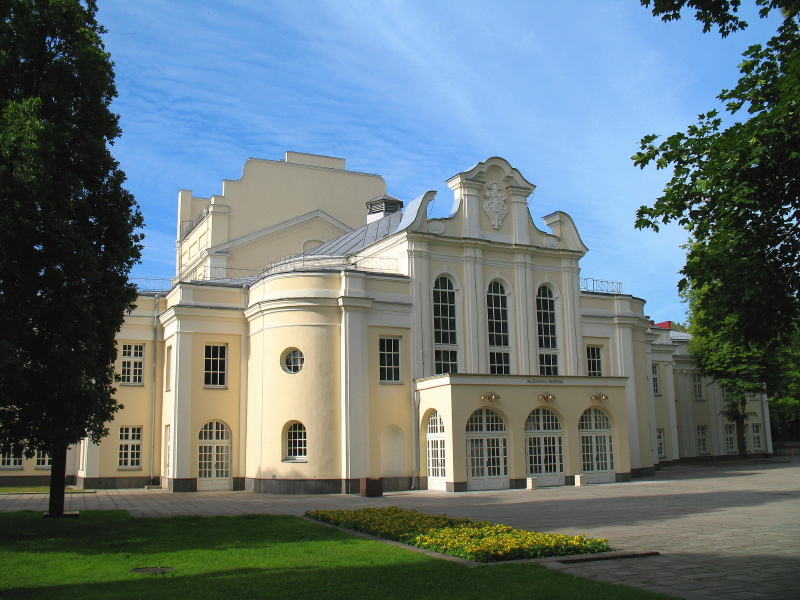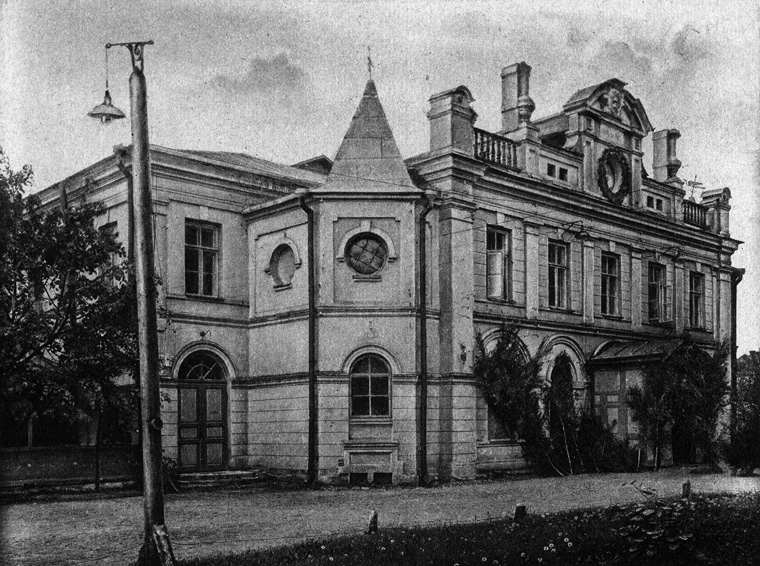Kaunas State Musical Theatre on:
[Wikipedia]
[Google]
[Amazon]

 The Kaunas State Musical Theatre is a musical theatre in Kaunas, Lithuania. It was established on November 27, 1940, in the former State Theatre hall adjoining the
The Kaunas State Musical Theatre is a musical theatre in Kaunas, Lithuania. It was established on November 27, 1940, in the former State Theatre hall adjoining the

 The Kaunas State Musical Theatre is a musical theatre in Kaunas, Lithuania. It was established on November 27, 1940, in the former State Theatre hall adjoining the
The Kaunas State Musical Theatre is a musical theatre in Kaunas, Lithuania. It was established on November 27, 1940, in the former State Theatre hall adjoining the Laisvės Alėja
Laisvės Alėja (literally Liberty Boulevard or Liberty Avenue) is a prominent pedestrian street in the city of Kaunas, Lithuania. It stretches between the St. Michael the Archangel's Byzantine-style church to the Central Post Office and ...
. For some time, it mostly presented operettas
Operetta is a form of theatre and a genre of light opera. It includes spoken dialogue, songs, and dances. It is lighter than opera in terms of its music, orchestral size, length of the work, and at face value, subject matter. Apart from its s ...
.
The building
The decision to build a Kaunas City Theatre was made in 1891, and the first play was staged there on January 9, 1892.Renaissance Revival architecture
Renaissance Revival architecture (sometimes referred to as "Neo-Renaissance") is a group of 19th century architectural revival styles which were neither Greek Revival nor Gothic Revival but which instead drew inspiration from a wide range ...
was chosen as a style for the building, and it was built in the City Garden square. The two-storey building incorporated a hall of 500 square meters in size. Spectators also could watch plays from the two-storey balcony rows. In the balconies, special loges were established for the Governor of Kaunas and the commandant of Kaunas Fortress
Kaunas Fortress ( lt, Kauno tvirtovė, russian: Кοвенская крепость, german: Festung Kowno) is the remains of a fortress complex in Kaunas, Lithuania. It was constructed and renovated between 1882 and 1915 to protect the Russian ...
.
After Lithuania established independence in 1918 and Kaunas became the temporary capital A temporary capital or a provisional capital is a city or town chosen by a government as an interim base of operations due to some difficulty in retaining or establishing control of a different metropolitan area. The most common circumstances leadin ...
, the theatre became a cradle for modern Lithuanian drama, opera and ballet theatres.
The theatre was reconstructed in 1922–1925, 1930-1933 and 1980. The exterior of the building took on characteristics of Baroque Revival architecture
The Baroque Revival, also known as Neo-Baroque (or Second Empire architecture in France and Wilhelminism in Germany), was an architectural style of the late 19th century. The term is used to describe architecture and architectural sculptur ...
, and the audience hall was enlarged to 763 seats, with a third row of balconies and a central loge added.
Romas Kalanta
Romas Kalanta (22 February 1953 – 14 May 1972) was a 19-year-old Lithuanian high school student known for his public self-immolation protesting Soviet regime in Lithuania. Kalanta's death provoked the largest post-war riots in Lithuania and in ...
set himself on fire in 1972 as a protest against the Soviet
The Soviet Union,. officially the Union of Soviet Socialist Republics. (USSR),. was a transcontinental country that spanned much of Eurasia from 1922 to 1991. A flagship communist state, it was nominally a federal union of fifteen nation ...
regime in the nearby square.
Musical theater
In 1948, the company of the Lithuanian Opera and Ballet Theatre, which resided in the State Musical Theatre, was moved toVilnius
Vilnius ( , ; see also other names) is the capital and largest city of Lithuania, with a population of 592,389 (according to the state register) or 625,107 (according to the municipality of Vilnius). The population of Vilnius's functional urb ...
, and musical theatre became the only dramatic genre cultivated in the building. It built its reputation on staging musical comedies. After Lithuania regained independence, the theatre added opera
Opera is a form of theatre in which music is a fundamental component and dramatic roles are taken by singers. Such a "work" (the literal translation of the Italian word "opera") is typically a collaboration between a composer and a libr ...
to its repertoire.
Notable performances
* Giuseppe Verdi's opera ''Rigoletto
''Rigoletto'' is an opera in three acts by Giuseppe Verdi. The Italian libretto was written by Francesco Maria Piave based on the 1832 play '' Le roi s'amuse'' by Victor Hugo. Despite serious initial problems with the Austrian censors who had co ...
'', 1951.
References
:General: : Theatres in Kaunas 1940 establishments in Lithuania Performing groups established in 1940 {{Europe-theat-struct-stub